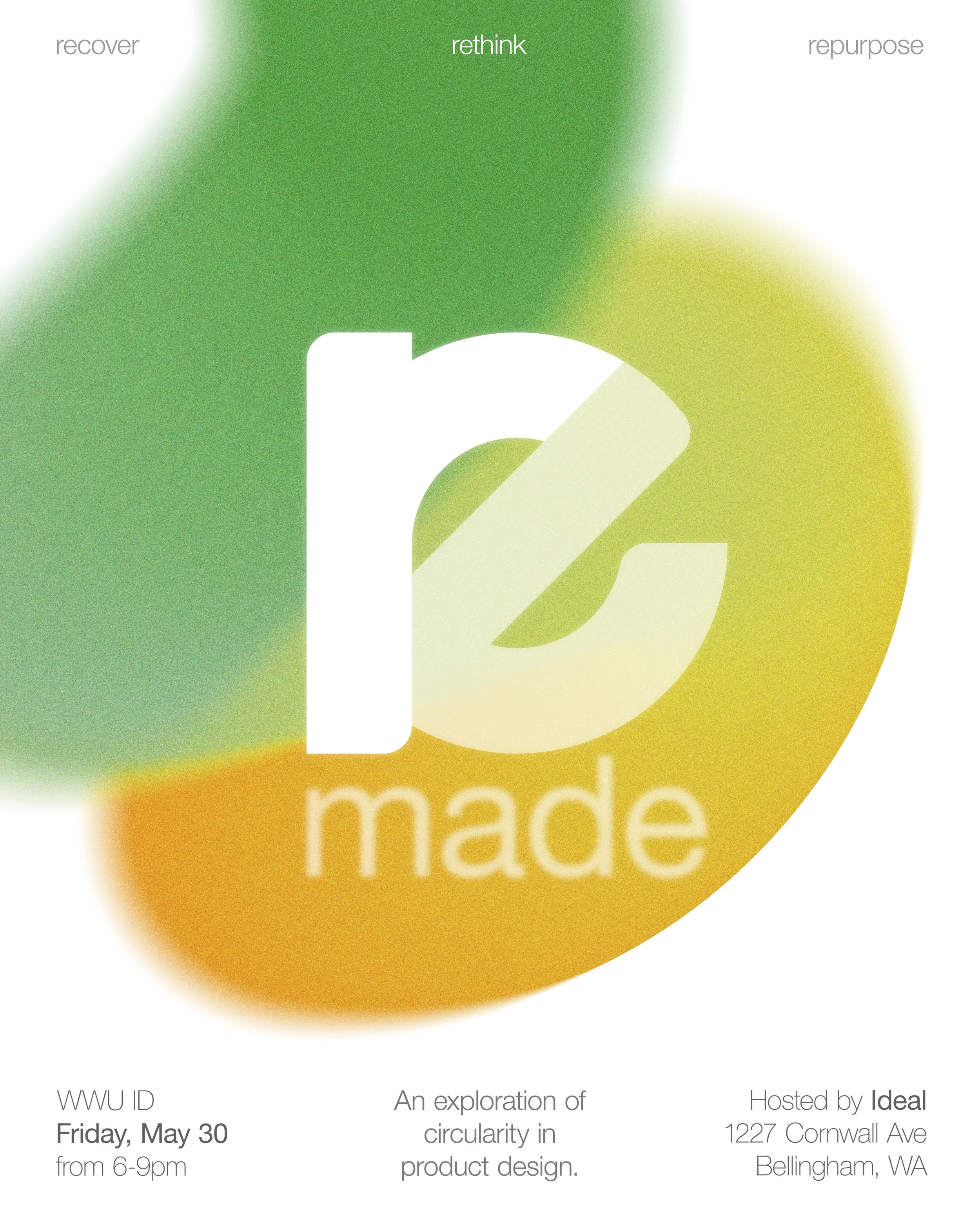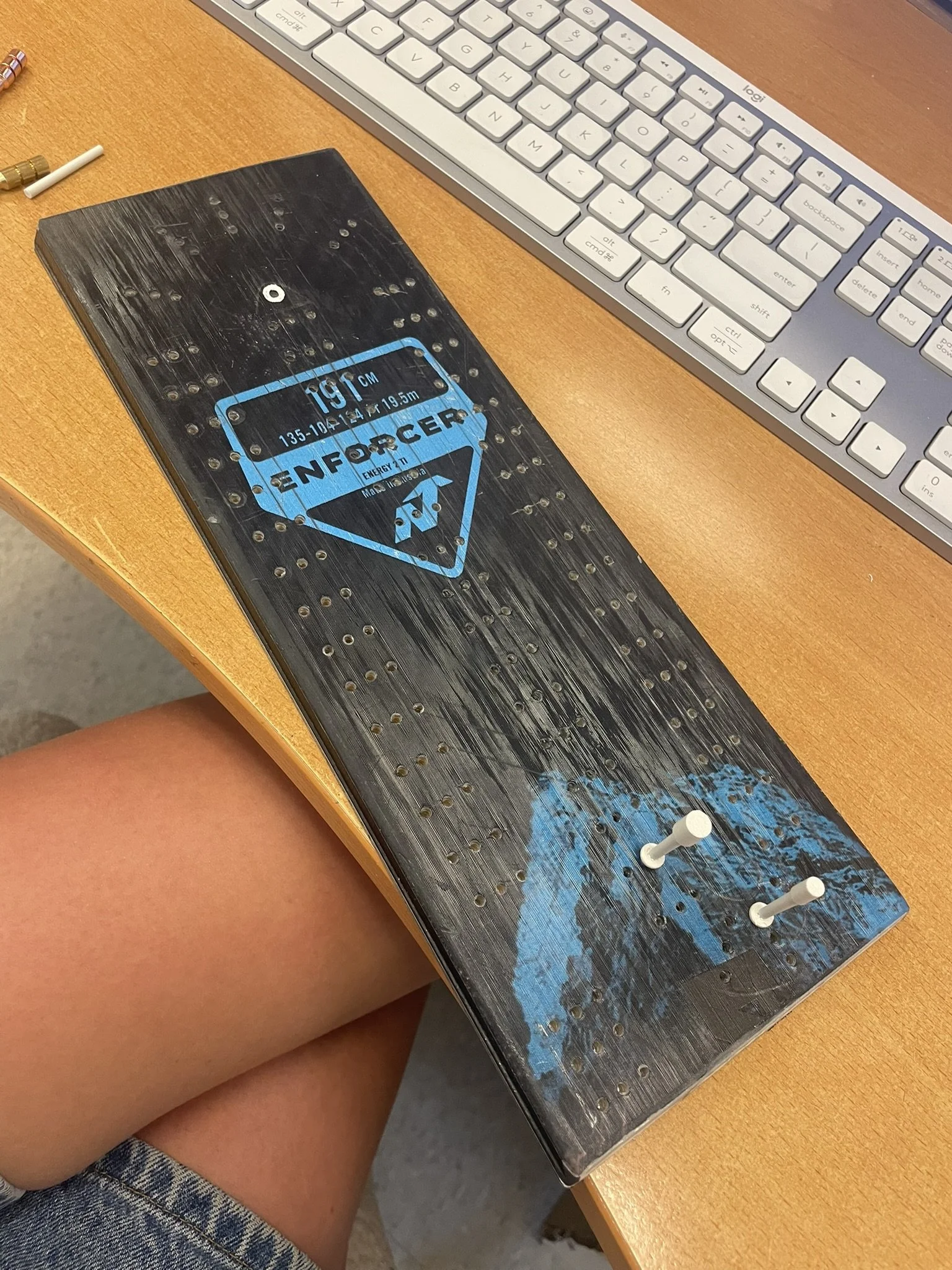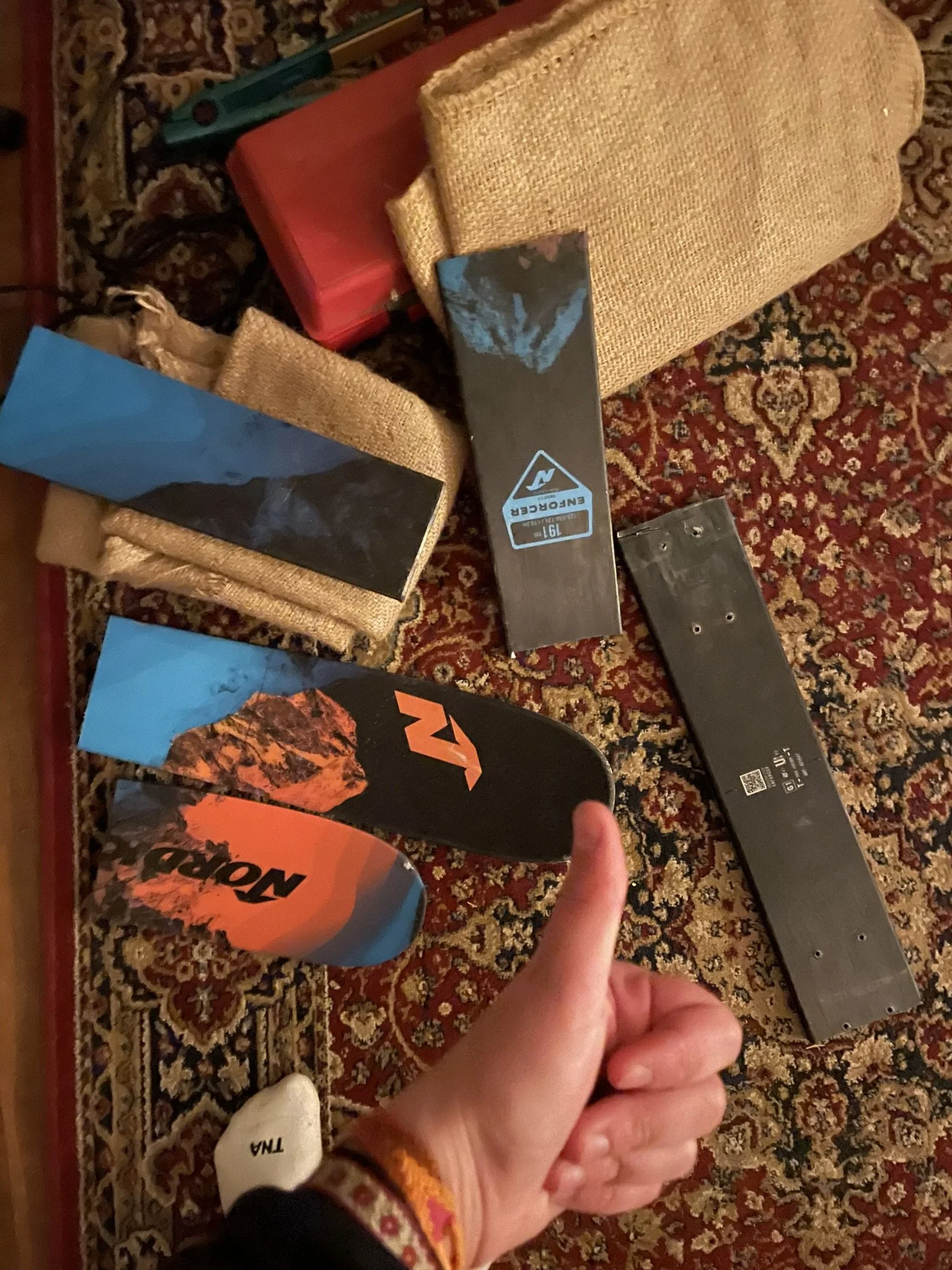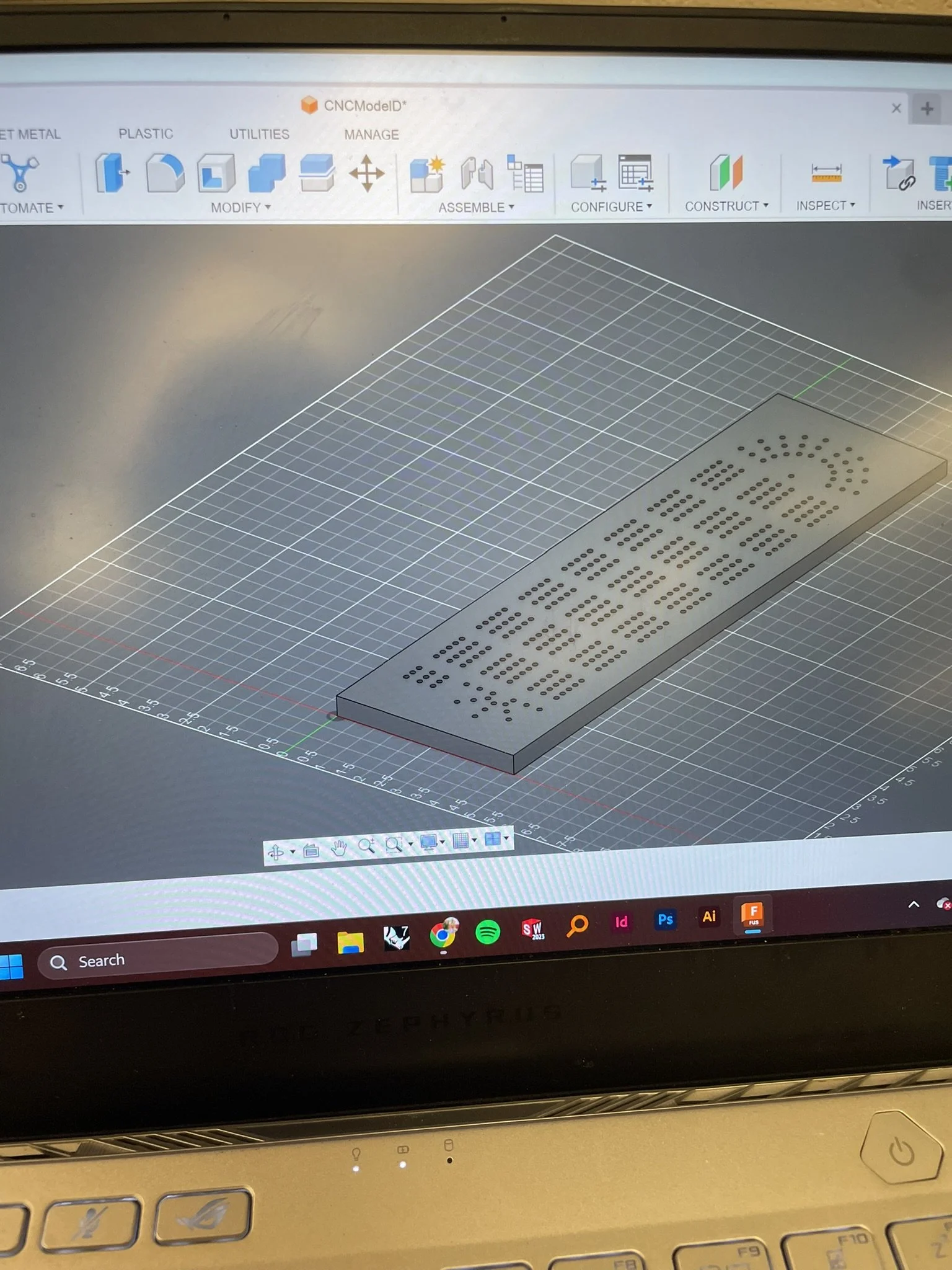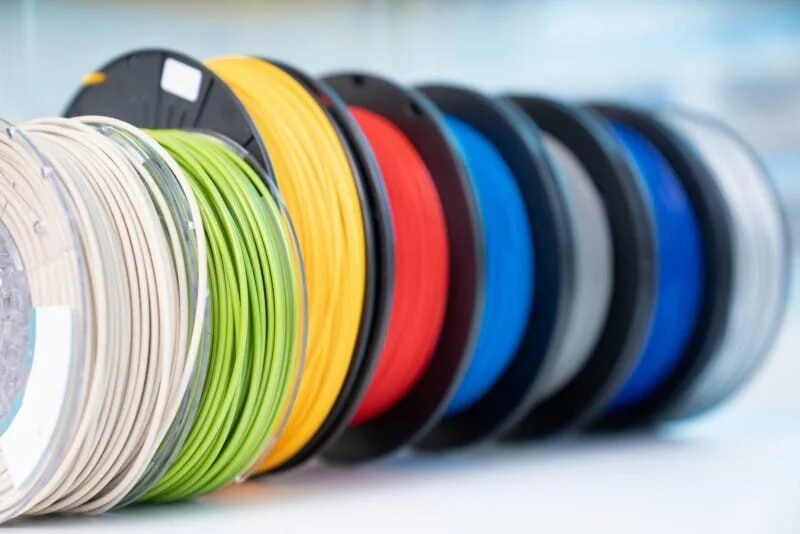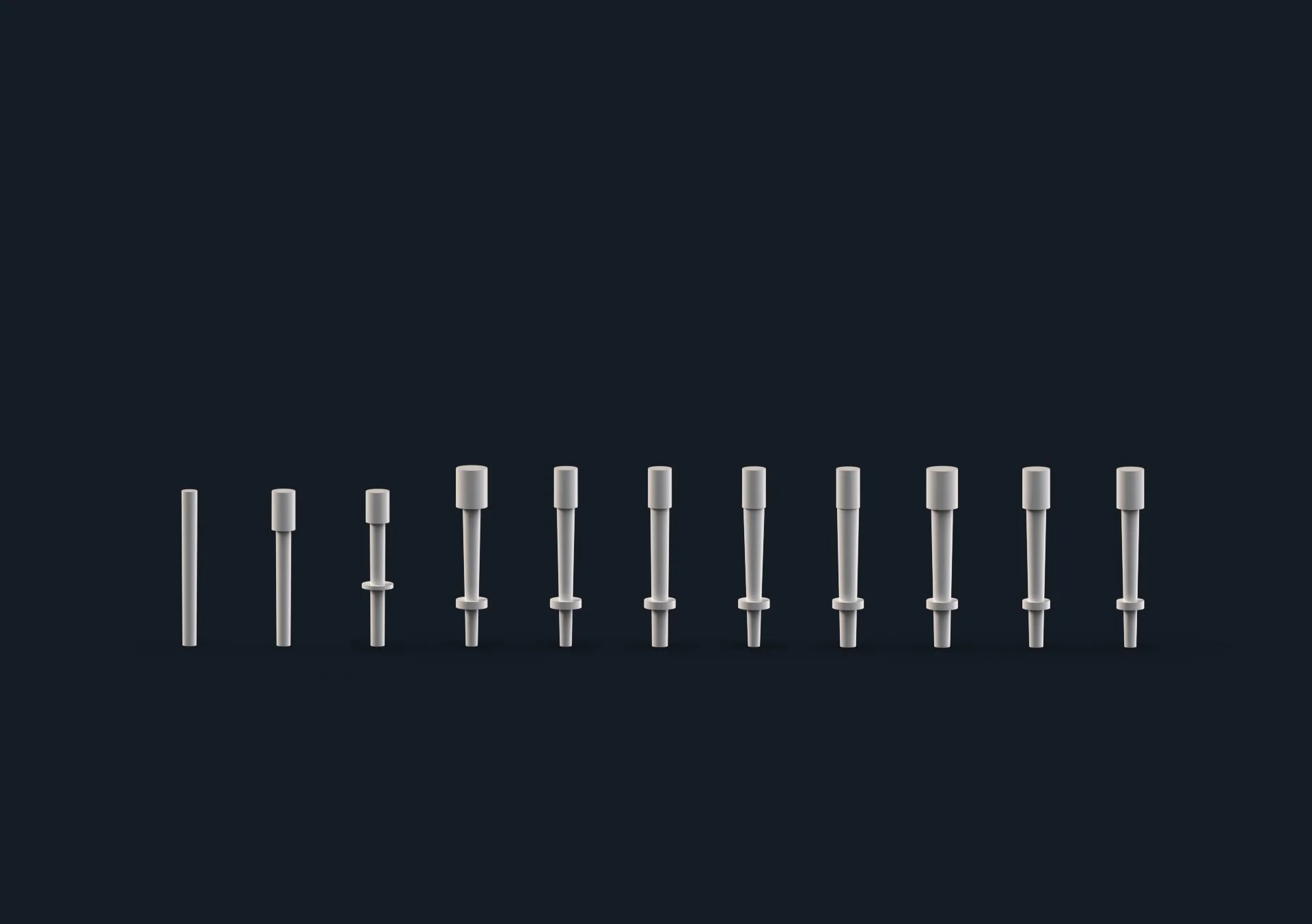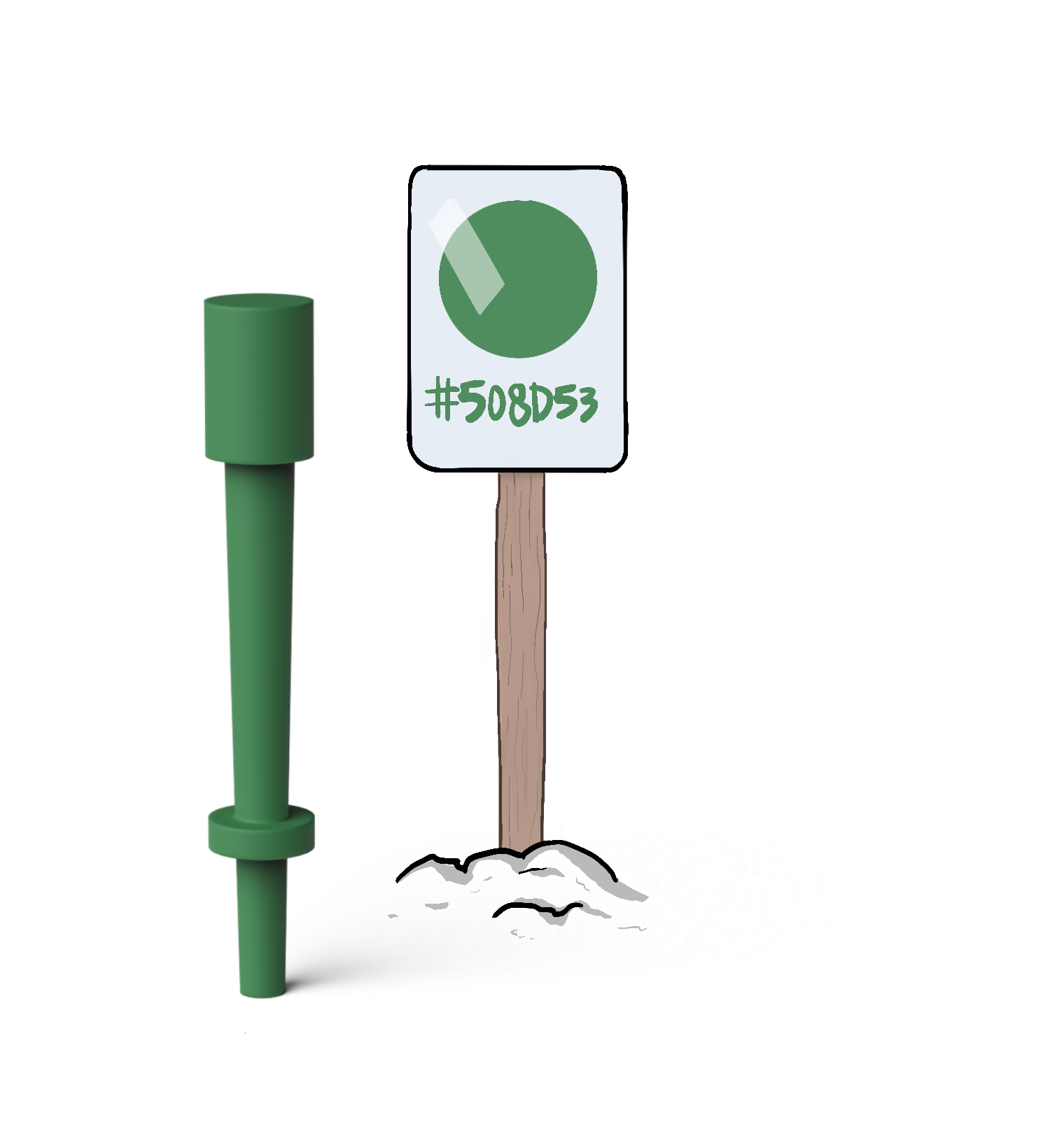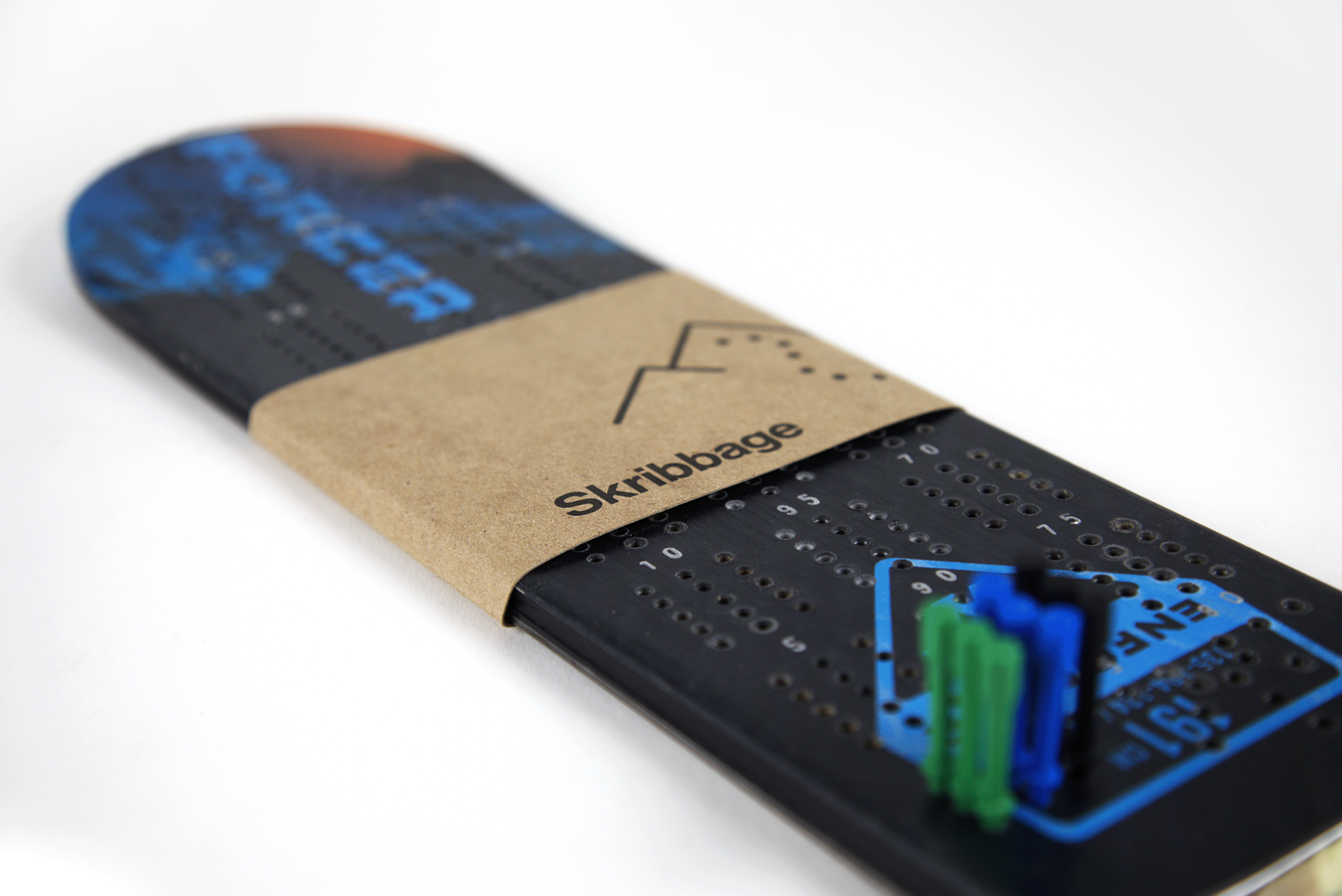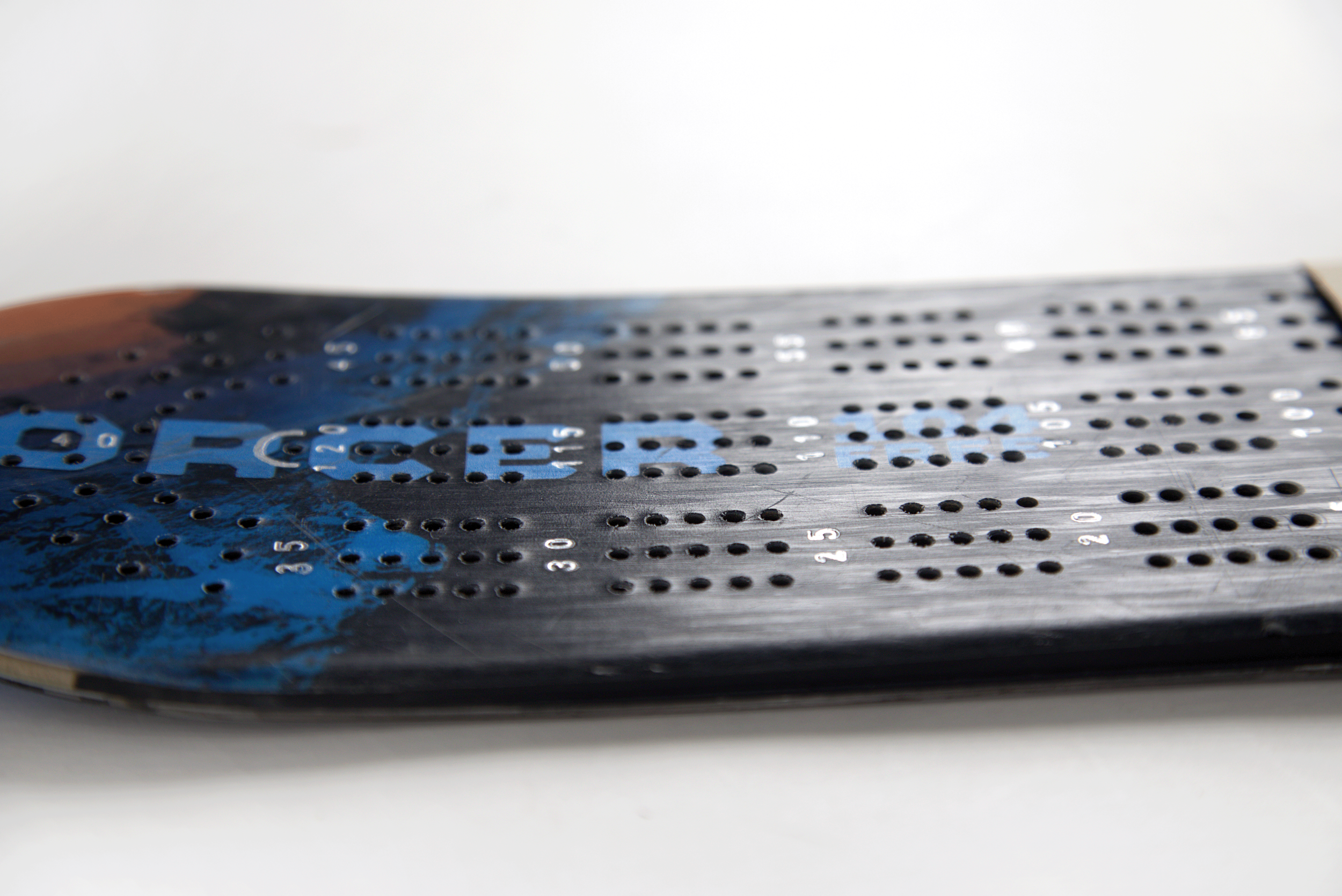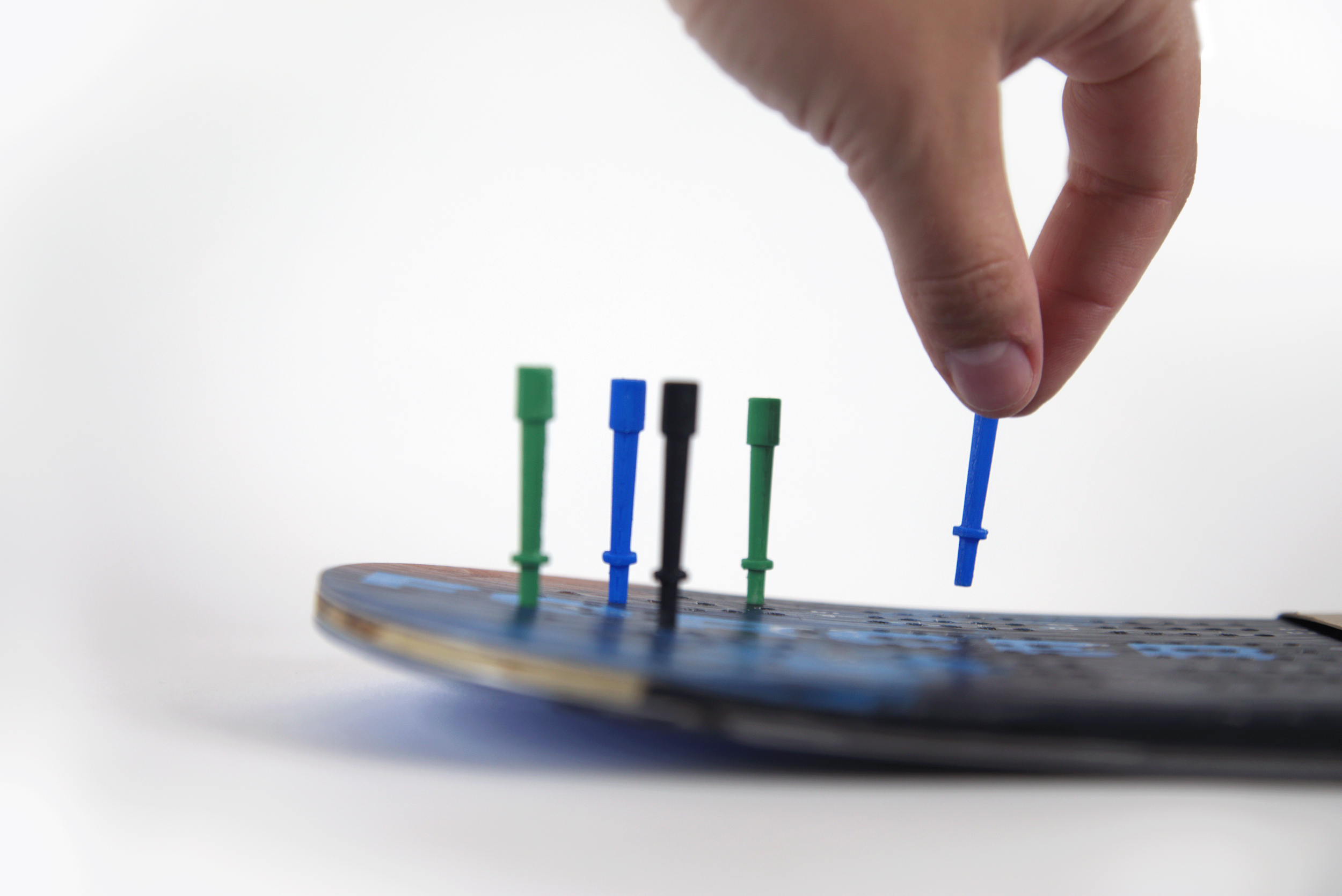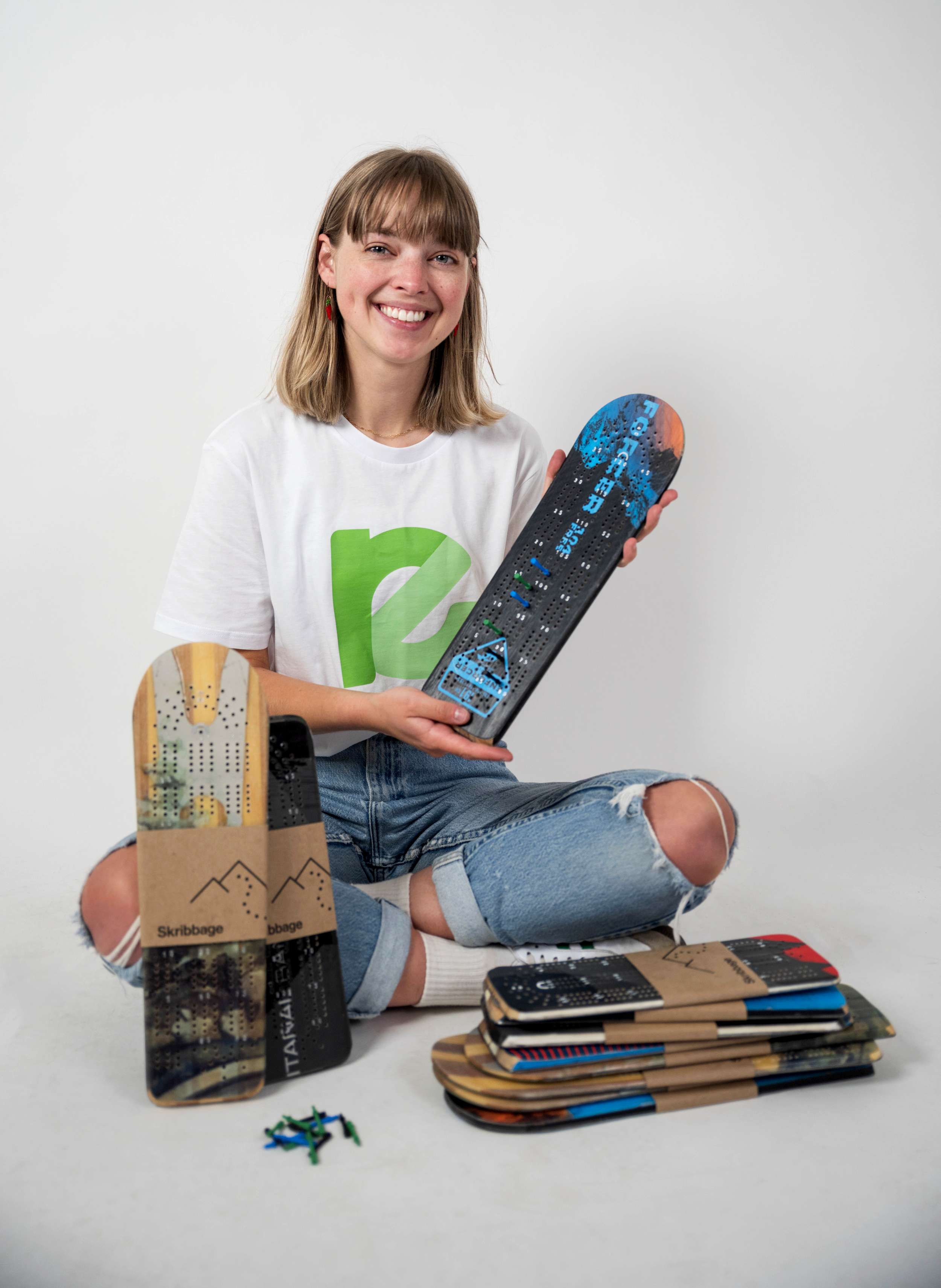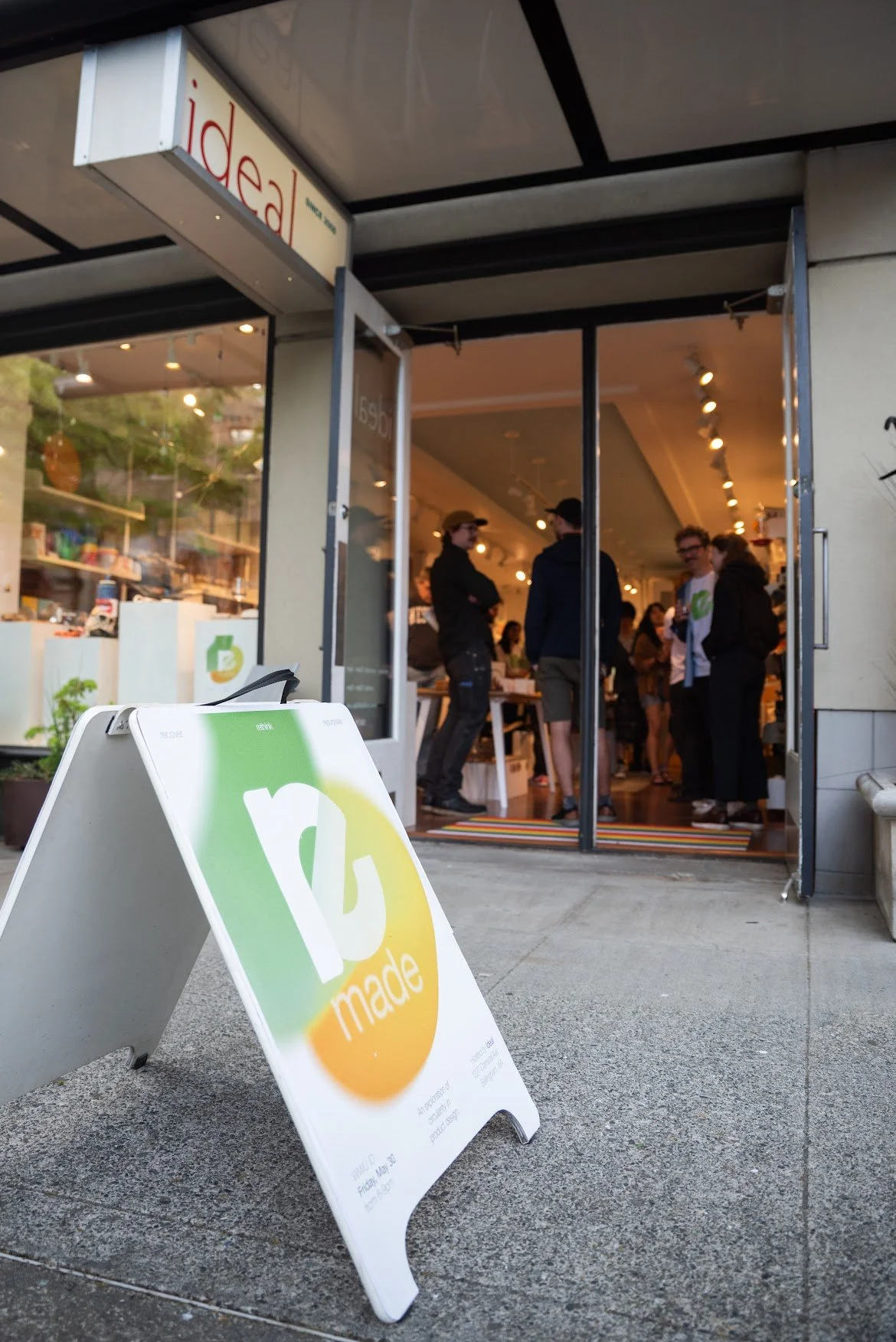
Skribbage
A cribbage board set made from unusable skis paired with recycled plastic pegs.
10 week project, 2025
This project was showcased at our annual event, ReMade, hosted by local Bellingham design boutique, Ideal. Founded in 1995 by professor Arūnas Ošlapas, ReMade challenges WWU’s junior ID students to design, manufacture, and sell a batch of products created from outsourced bulk scrap material. This year’s ReMade product line surrounded practices of circular design.
“Create a scalable product from bulk scrap material that utilizes practices of circular design.”
What is circular design/economy?
Circular design surrounds creating products that are reused, repaired, or recycled to reduce waste and conserve resources, promoting sustainability throughout their lifecycle. This is achieved through designing effective systems involving all parties, from users to lawmakers to recyclers. Read more about circularity here!
Initial Ideation
Areas of Focus
Skis are expensive personal objects that can bring users memories of their own skiing experiences.
I’m a lifelong skier with a strong passion for the sport. I work for a local ski shop, Backcountry Essentials, where I have access to (an eye-catching amount of) skis that are bound for the dump.
Skis
Games act as a physical centerpiece, providing an activity that brings people together for friendly competition.
Cribbage is a game that has always brought my family together to play. This game has been around for 400 years but is increasing in popularity with a dedicated community of players.
Games
Material Considerations
Skis are composite objects with (usually toxic) epoxy resin between layers. It is impractical for them to be deconstructed for parts that can be recycled, the only “worthy” part being the inlayed steel edge.
Once skis are mounted more than 2-3 times, it is unlikely they are able to be remounted and must be discarded. Thus, the landfill can be avoided with creative repurposing.
Experimentation
A prototype was rough-cut and hand-drilled to learn about the ski’s material properties.
Utilizing a CNC for drilling would offer consistency and a fast production rate. Testing was successful for both criteria.
Process Refinement
Peg Criteria
Pegs are the main interaction point between the user and game, so they must have structural integrity.
Durable
While the purpose of the pegs is to mark players’ spots, they should be visually delightful.
Reflect Skiing
Since the board is composite, recyclability is a key goal of additional parts.
Be Recyclable
Material Considerations
Metal offers optimal durability and a high-quality appearance. A manufacturing limitation with using metal in this timeline is the labor needed to produce 100+ of these small pegs.
Aluminum
Plastic can achieve this form with various manufacturing methods. PLA is weaker than ABS, but both can be 3D printed with recycled filament, optimizing durability, cost, and production time.
Plastic (recycled PLA and ABS)
Peg Ideation
From initial sketches, the pegs were envisioned to nod at the form of a ski pole while maintaining structural integrity.
Testing & Refinement
Through lots of dimension testing, the ideal size was found. Printing pegs horizontally dramatically increased their structural integrity.
Three-person games require three different peg colors. I chose green, blue, and black to reflect difficulty signs displayed at the top of ski runs.

